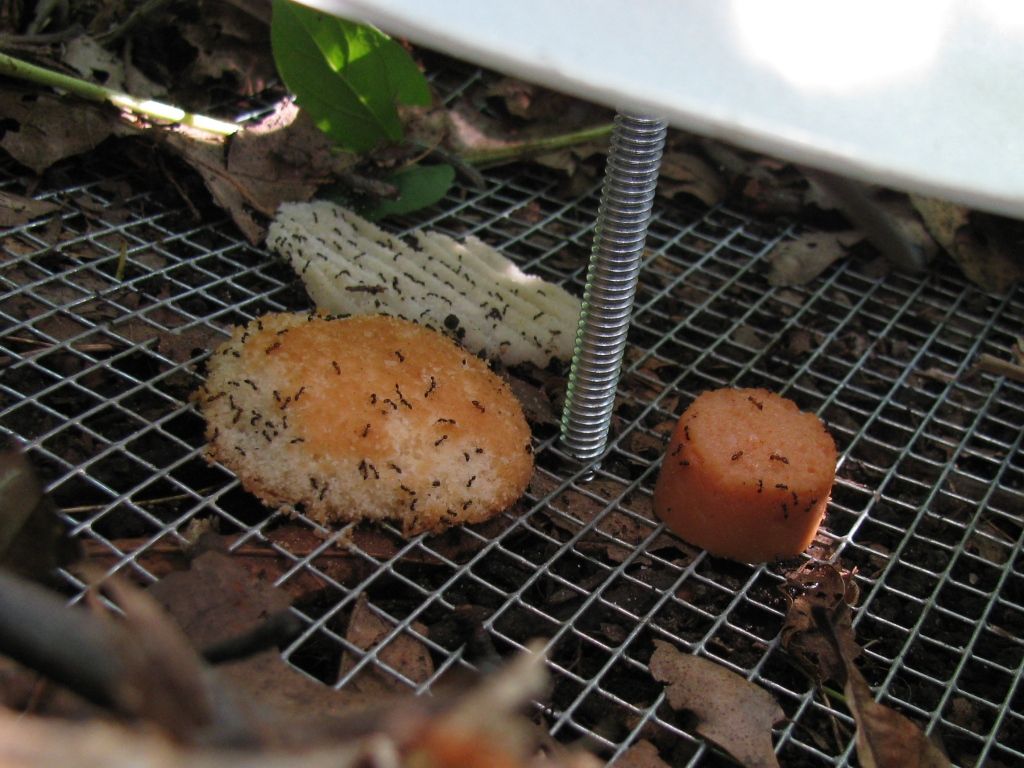
Thanksgiving may be over for humans, but every chip or cookie dropped on the ground can become a small feast to any number of insects or other crawling creatures. A new study found that New York City's bugs eat more food than expected; along a single median—the grassy strip in the middle or side of the road—in western Manhattan, they chow down 2,100 pounds of food per year, the equivalent of 60,000 hot dogs.
The study, published today in the journal Global Change Biology, also suggests that bugs eat scraps that would otherwise go to rats and mice, and thus directly compete with these pests.
The researchers, led by Elsa Youngsteadt, an insect ecologist at North Carolina State University in Raleigh, North Carolina, found that ants play a primary role in the garbage-noshing.
"I don't think it's previously been shown that ants were playing such an important role for people, [eating] food that would otherwise go to rodents... and other undesirable animals that can cause humans health problems," says Julian Resasco, an ecologist at the University of Colorado at Boulder, who wasn't involved in the study.
"Hopefully people will now think of ants as other than something to kill," Youngsteadt tells Newsweek.
The study involved several experiments. In one, researchers left out bits of food in the grassy medians along the major thoroughfares of Broadway and West Street, putting put food scraps in special cages that didn't allow larger animals to steal bites. Along this nine-mile stretch, from the southern tip of Manhattan up to Harlem, the bugs eat the equivalent of 200,000 cookies per year, they calculated.
This food-disposal service is one that "turns out to be really important but which people…completely ignored or didn't know about it," Resasco adds.
In other component of the study, the scientists placed food in medians without a cage, and found that other larger animals like rats indeed ate some of it, showing that bugs and rodents are competing.
The researchers used three types of human food: Nilla Wafers, Ruffles potato chips and Oscar Mayer hot dogs.
They scattered these scrumptious bits in both medians and city parks, and they found—contrary to their expectations—that insects living within the medians alongside roads ate about three times more food than those in the parks. This was surprising, because medians have fewer insects than parks and are also less biodiverse. The findings suggest that the medians probably contain a few specific types of arthropods (a broad group of animals that includes insects and mites and millipedes) that can put down more food, Youngsteadt says.
This may be due in part to the fact that medians contained more colonies of exotic pavement ants, which are known for quickly finding and eating large quantities of food, she adds.

Uncommon Knowledge
Newsweek is committed to challenging conventional wisdom and finding connections in the search for common ground.
Newsweek is committed to challenging conventional wisdom and finding connections in the search for common ground.
About the writer
Douglas Main is a journalist who lives in New York City and whose writing has appeared in the New York ... Read more
To read how Newsweek uses AI as a newsroom tool, Click here.








